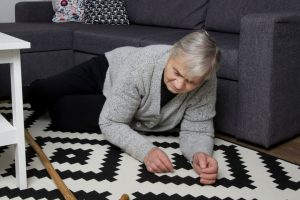Older women struggling with urinary incontinence could benefit from regular, low-impact exercise. In a new study published in the journal Annals of Internal Medicine, yoga as well as stretching and strengthening exercises were found to be beneficial.
The study, led by researchers from Stanford Medicine and the University of California, San Francisco, is part of a larger project to identify low-risk and cost-effective ways to treat one of the most common health problems in women as they age. After 12 weeks of a low-impact yoga program, study participants had about 65% fewer incontinence episodes. Women in a control group who did stretching and strengthening exercises had similar benefits over the same period. According to the researchers, the benefits are comparable to the effects of medication used to treat incontinence.
Urinary Incontinence is a Widespread Problem
“Our study tested the kind of yoga that just about anyone can do, with modifications for different physical abilities,” said the study’s lead author, Leslee Subak, MD, chair of obstetrics and gynecology at Stanford Medicine. Because the study was conducted in part during the COVID-19 pandemic, many participants received their yoga or exercise instructions via online sessions and practiced at home. The lead author of the study is Alison Huang, MD, Professor of Medicine, Urology, and Epidemiology and Biostatistics at UCSF.
Urinary incontinence, which affects more than half of all middle-aged women and up to 80% of 80-year-olds, can lead to a host of other problems, from social isolation to fall-related bone fractures. But there is help. Part of the problem, according to the researchers, is that incontinence is stigmatized. Many sufferers are ashamed and do not talk about such an intimate problem.
Incontinence deserves good treatment as it affects people’s lives in many ways. It takes away people’s independence. Patients may avoid activities that could increase their well-being, such as exercising or socializing with friends. They are more likely to be admitted to a care home and suffer certain serious medical problems such as hip fractures.
Incontinence and an overactive bladder are among the biggest risk factors for falls and fractures in older women, according to the researchers They rush to the bathroom at night – with the lights off – trip and fall and break a hip. Some factors that contribute to incontinence risk cannot be changed, such as age or having children. But others are modifiable.
Much of the research has focused on weight loss and physical activity, which are indeed effective treatments. Subak became interested in yoga as a treatment after some of her patients told her it helped them.
An Active Lifestyle is Helpful
The study compared two 12-week exercise programs: 121 participants were randomly assigned to yoga and 119 to an exercise control group. The participants were women with urinary incontinence that caused discomfort at least once a day. They were between 45 and 90 years old, with an average age of 62.
As part of the yoga program, the participants learned 16 Hatha yoga poses to strengthen the pelvic floor in two 90-minute sessions per week. The pelvic floor consists of the muscles that form the base of the pelvis and hold the organs – including the bladder and urethra – in place. Participants were also asked to practice yoga outside of class for at least one hour per week and to keep an exercise log.
The participants in the control group spent the same amount of time in the yoga classes, but their classes focused on non-specific stretching and strengthening exercises that did not engage the pelvic floor. They were also asked to train for an additional hour per week and to keep a training diary. The study began with in-person classes and then moved to a video conference format when the COVID-19 pandemic lockdowns began.
Participants recorded when they lost urine and classified whether it was urge incontinence, where an overactive bladder causes a person to urinate more frequently than usual, or stress incontinence, which is caused by pressure in the abdomen, such as from coughing or sneezing. They also answered standard questionnaires about their bladder function.
Incontinence Episodes Reduced by 60 Percent
At the beginning of the study, the participants had an average of 3.4 episodes of urinary incontinence per day, including 1.9 episodes of the urgency type and 1.4 episodes of the stress type. At the end of the 12-week program, women in the yoga group had an average of 2.3 fewer incontinence episodes per day. Those in the physical fitness group experienced 1.9 fewer episodes per day.
The two treatments were about equally effective, with both approaches reducing incontinence episodes by about 60%, and the benefits of both treatments were significant, according to the researchers. Patients who want to try these approaches could look for gentle Iyengar yoga classes or other gentle exercise classes in their communities or online. According to Subak, instructors should be able to adapt the activity to participants’ physical limitations. Other non-surgical treatments for incontinence, including medication, typically resulted in a 30 to 70 percent improvement in symptoms.







